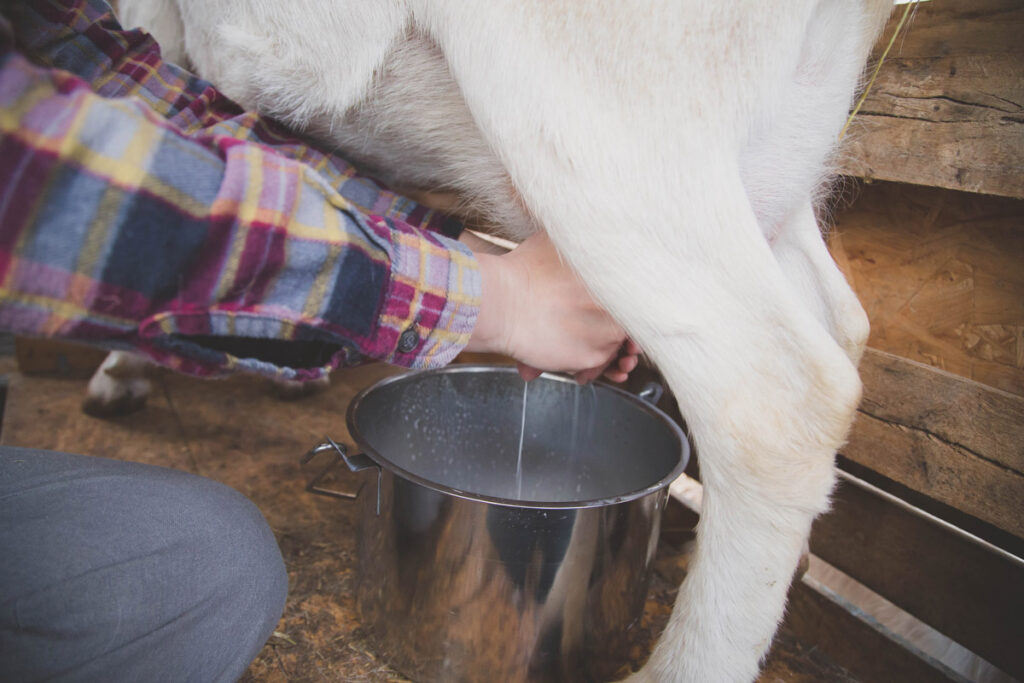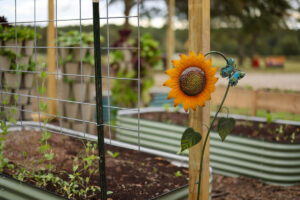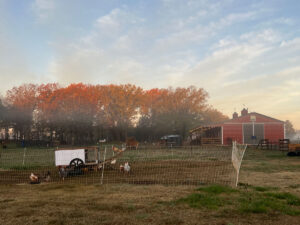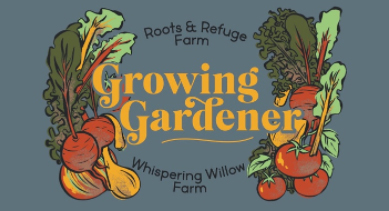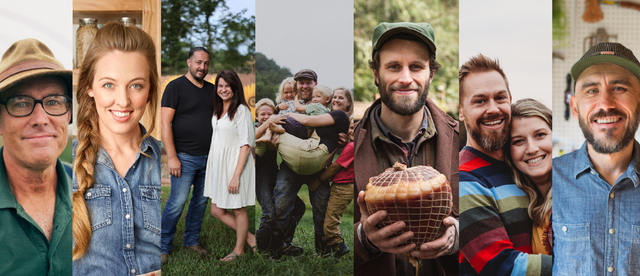When it comes to raising a dairy animal at home, there are many things to consider. In this post, I'm breaking down the types of dairy animals, things to consider when choosing an animal, milking tips, and things to know before bringing your dairy animal home.
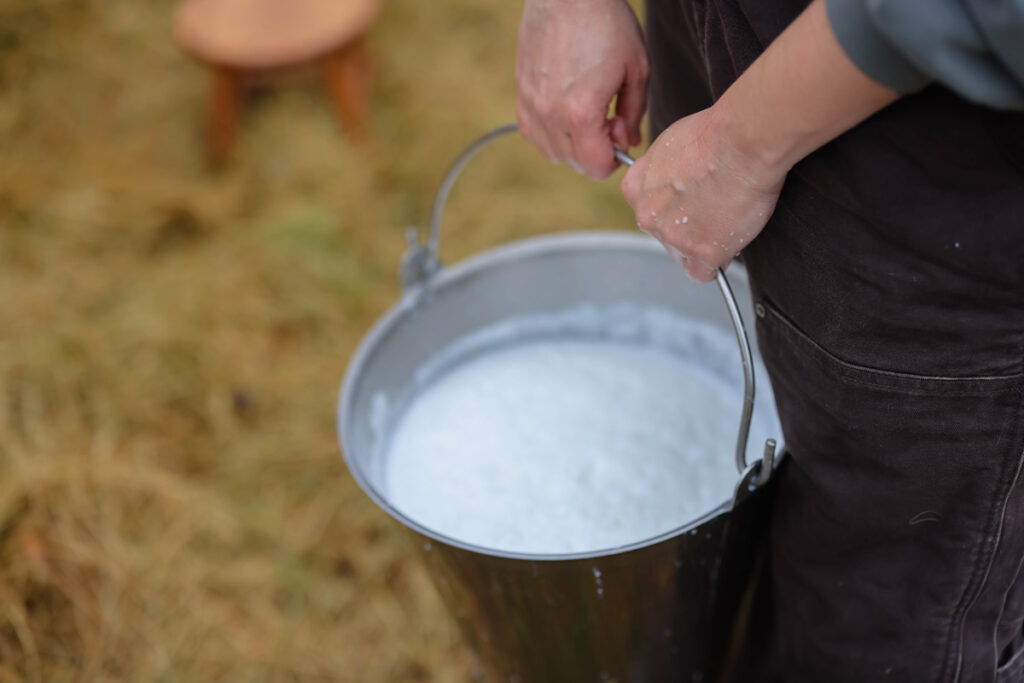
For most, raising backyard chickens is the gateway farm animal. And for most, dairy animals are the next. That was the case with us.
On our old homestead in Arkansas, we got into dairy goats because it was what worked with our land. We had a very wooded property, so getting grass to grow was extremely difficult. On our new homestead in South Carolina, we have plenty of property to graze our cows. This means we're only feeding grain during milking which significantly cuts down the cost.
There are many things to consider before bringing a dairy animal home. We've learned some of these lessons the hard way. So if I can share our tips and the lessons we've learned to help you on your journey, then I'm happy!
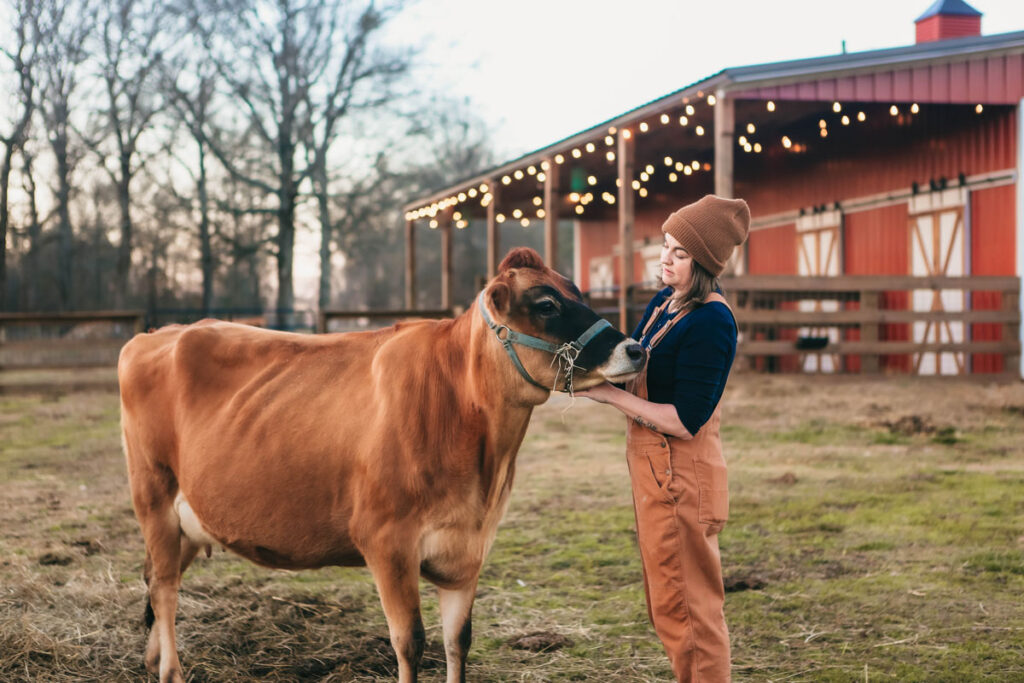
What Dairy Animal Should I Get?
This is one of the most common questions I get asked. Since we've now raised both goats and cows for their milk, we have a bit of experience with each. Though I would consider myself new to milking cows (just over a year at the time of this posting), I feel like an expert when it comes to goats.
There are definitely some variables that will come into play when answering the question, “What dairy animal should I get?”
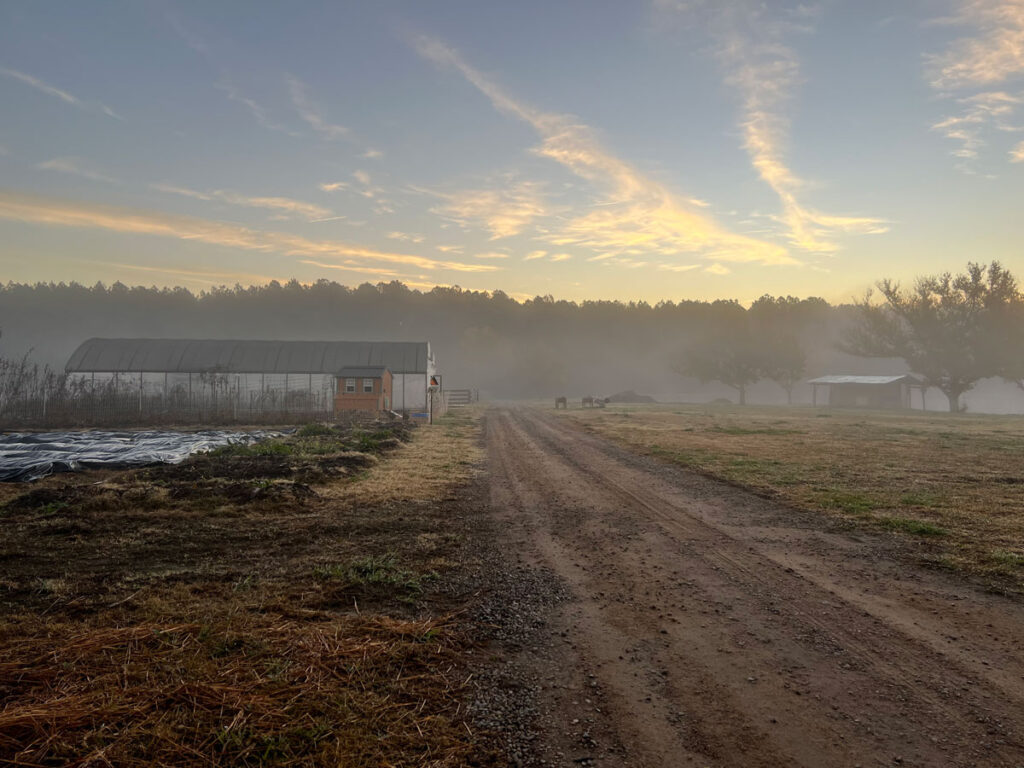
Property
Your property may be the biggest deciding factor for what kind of dairy animal you can keep. If you need your land cleared, goats are a great option.
However, if you have large acreage with plenty of grass, a cow may be better.
Keep in mind that your dairy animals will need to eat. If you can't provide their food with your land, you'll have to provide it by buying it. For a better idea of what this entails, read more about feeding dairy animals below.
Ability
When thinking about dairy animals, you have cows, goats and sheep. Cows can get upwards of 1,000 pounds. In comparison, a Nigerian dwarf goat is about 40 pounds when fully grown. Goats and sheep are much smaller, however, I've had goats give me black eyes and plenty of bruises. Learn more about animal breeds here.
Knowing your ability to handle a specific animal will be important when considering which dairy animal is right for you. There are certain breeds that have calmer tendencies, but within each breed there are outliers, so you never truly know what you're going to get!
Budget
Most of us enter into this homesteading lifestyle in order to save money by raising or growing the foods that cost so much at the grocery store. But we must be sure we're comparing apples to apples.
If you want to raise a cow to save money on milk, but are currently buying conventional pasteurized milk from the grocery store, you won't save money at all. However, if you're currently spending upwards of $23/gallon of raw milk, then the cost of raising your own dairy cow may very well save you money.
Furthermore, the initial cost of an animal can vary greatly. Not only between species (cows, goats, sheep) but also within each breed. How much are you willing to spend on a dairy animal?

Cows
The average cost of a dairy cow will be somewhere between $1000-$2500. I have seen some instances where cows sell for more, and I have seen some instances where they're selling for much less. Anytime you see these outliers, it's good to know why.
A very cheap cow may have issues like reoccurring mastitis, or behavioral issues. Whereas an expensive cow may be bred for specific genetics like A2/A2 milk.
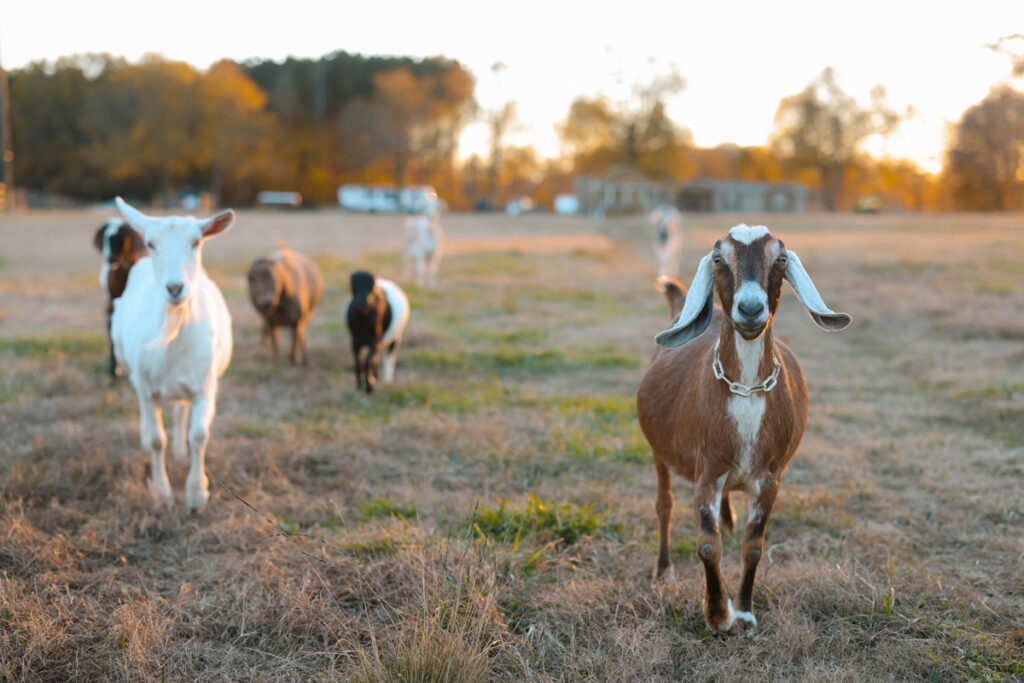
Goats
Goats will cost much less, and in the past, I've even bartered for goats. Because goat breeds vary greatly, it's hard to give an average of what it will cost to purchase a goat.
My recommendation is to start looking into the best goat breed for you, understand what it takes to milk a goat, then start shopping around to get an idea of an average price for that breed.
How to Shop for a Dairy Animal
When shopping for a dairy animal, there are a few non-negotiables on my list. First of all, for any animal to be in milk, it must first be bred and have a baby.
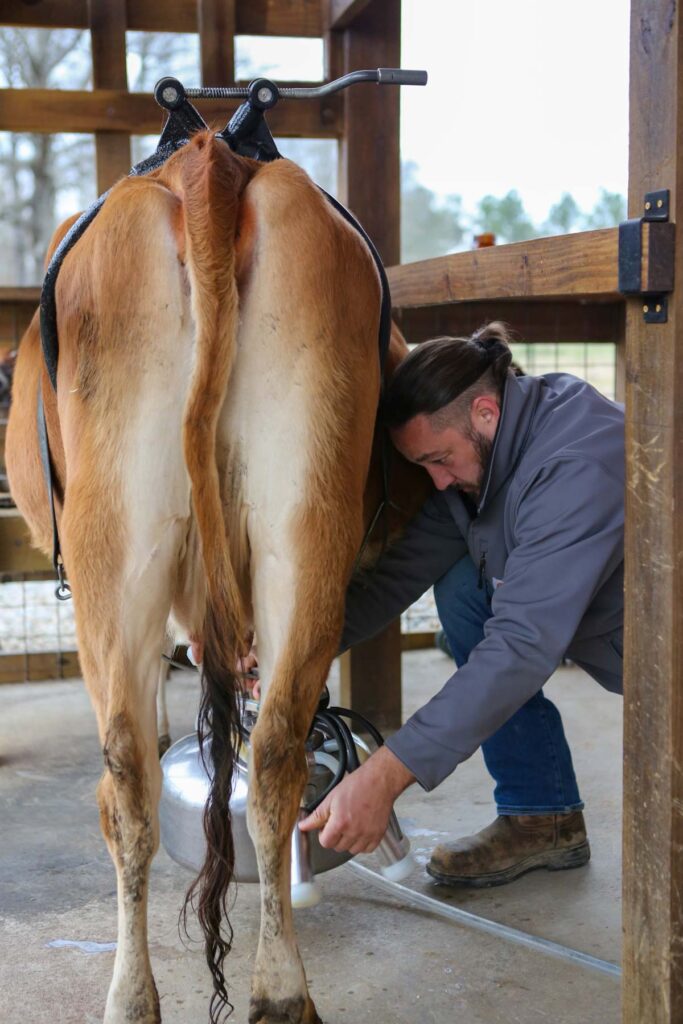
Already in Milk
For new dairy animal owners, it might be easiest to purchase either an animal already in milk or one that's currently pregnant.
I happen to be on the “impatient” side of things, so buying a cow already in milk is the way we went. We also purchased a cow who had given birth before. Knowing she was already a good mama meant a lot to me.
This was easy for us because we were in a place where we could hand-milk the cow twice daily and didn't need any infrastructure set up beforehand.
Consider your circumstances and whether or not getting an animal already in milk is the right decision for you. It may be better to buy an animal that's bred, so you have time to prepare for milking.
Positive Pregnancy Test
If you're buying a dairy animal that's supposed to be pregnant, be sure to get a positive pregnancy test. Sometimes the farmer will say the animal “has been bred” (meaning it was AI'd or put in with a bull or buck), but that doesn't always mean the breeding took.
Since you're likely to pay more for a pregnant dairy animal, having that positive pregnancy test is important.
Disease Testing
The non-negotiable on my list is always disease testing. Having a health check on the animal is imperative for the bio-security of your farm. Without this, you can bring diseases onto your farm that will wreak havoc.
It's possible to work the cost of disease testing into the sale of the animal. But it's one that I would not pass up.
Breed
The breed of your dairy animal is important. It can determine temperament, the amount of milk it produces daily, and even the amount of butterfat in the milk.
For more information on breeds, check out my book, The First Time Homesteader.
Understand that Holstein cows can produce upwards of ten gallons of milk per day, whereas our Jerseys produce about 3-5 gallons per day. Even within this breed, some of our cows have a much higher cream line than others.
Don't feel like a high-producing animal is always the best. Consider what you want to do with the milk. How much will your family drink daily, and how much will you turn into other dairy products?
Ask Questions
When shopping for a dairy animal, visit the farm. Check out the animal's current living conditions. Ask the farmer what they feed, how often they feed, how often they milk, and how much milk the animal produces.
If the animal has birthed before, ask if they're a good mama to her babies, how the delivery went, etc.
You can find out a lot of information about the animal simply by observing and asking questions.
Where to Buy
There are many places to buy a dairy animal, many being online. It's my opinion that buying locally tends to be best for the animal. Anytime you're buying an animal, be sure the seller is willing to let you come visit the animal before agreeing to purchase it.
- Facebook & Facebook Groups – It may or may not be against Facebook's terms of use to sell farm animals through their platform. However, many people get creative in order to make animal listings. I recommend joining a few local groups, as these can be great resources. Milk Cow Market is a great Facebook group that has over 20 thousand members.
- Farm Co-Op or Farm Store – Sometimes, farm co-ops or farm stores will have fliers up of locals selling animals. If there aren't any fliers, the employees at these stores sometimes know where to send you.
- Word of Mouth – A great way to gain leads for a dairy animal is by word of mouth. Tell other homesteaders, farm stores, and co-ops that you're in the market for a dairy cow or milk goat. Give them your contact information so they can give you a call if they come across a lead.
- Craigslist – This may not be as popular as it once was. But it's worth a shot if you can't find a dairy animal anywhere else.

Keeping a Dairy Animal
Before you bring your dairy animal home, you'll need to keep certain aspects of raising a dairy animal in mind.
Milking
Welcome to the world of daily milking! For some, this may seem like a prison sentence, but for many (including myself) I love the routine of it all.
There are many things to consider when thinking about milking a dairy animal:
- Machine Milking vs. Hand Milking – If you've been around here for long, you know that we've done both machine milking and hand milking. For us, this comes down to practicality and ability. I love the romanticism of hand-milking, and I always hand-milked our goats. However, when we have three cows that need to be milked twice a day, using a machine saves us a lot of time.
- Machine Milking – Many people think they want to machine milk because it's faster, but it's only faster if you're milking more than one animal. Otherwise, the time it takes to clean and sterilize all the equipment is just about as long as it takes to hand milk.
- Hand Milking –
- Calf-Sharing – Something we love to do is calf-share with our mama cows. This means keeping a calf with its mama all throughout the day, letting it nurse freely, then separating the calf and mama at night. In the morning, we take the cows milk, then let the calf out to be with mama again all day. The benefit of this is that you have healthier babies, less chance of mastitis with the mama, and if you ever have to take a break from milking (say due to illness or a vacation) then you can leave the calf with mama 24/7 and everyone will be just fine.
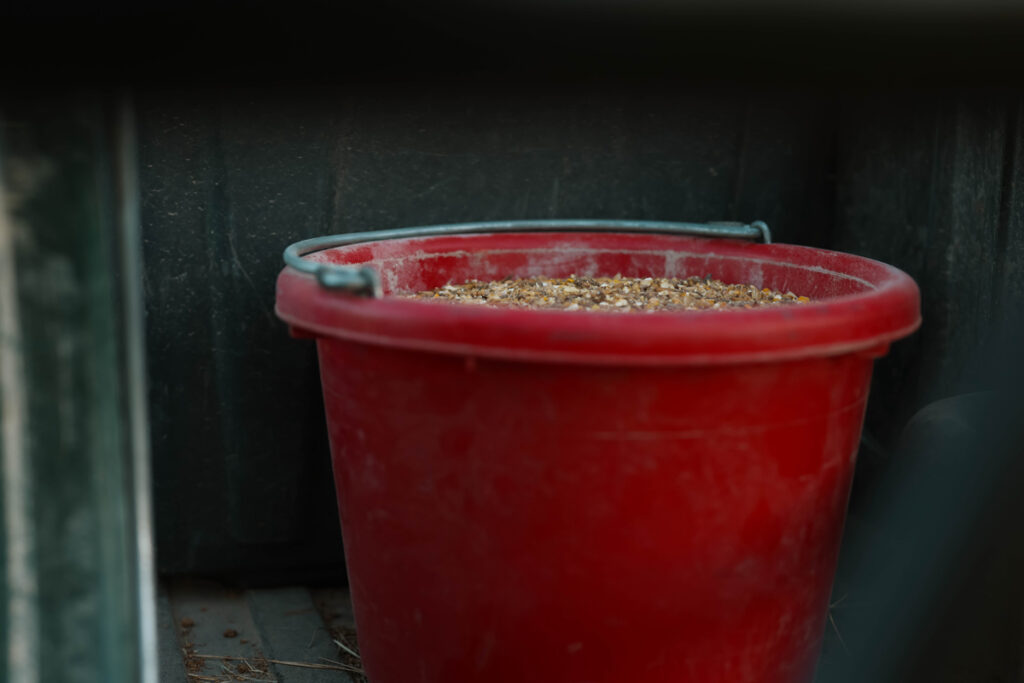
Cost to Feed a Dairy Animal
Just because you have a dairy animal doesn't mean you're automatically saving money at the grocery store – quite the contrary. The following financials should be considered before jumping in with both feet into owning a dairy animal.
- Dairy Animals Aren't Free – Just because you have an animal doesn't mean they're free. These animals still need to eat, and some of that feed may need to be purchased by you (unless your homestead can support the animals based on its resources).
- Cost to Feed a Cow – A cow eats 10% of its body weight in feed daily while a goat eats about 3-4% of its weight in feed daily. For our cows, this is about 100 pounds of feed. Twenty pounds of that is in grain. Each cow gets 10 pounds of grain at the morning and evening milkings. Then, the remaining 80 pounds is from the grass as they rotationally graze on our land. Goats will need some grain-based feed. Look at a local mill as they're usually the best price.
- Grain – Our three cows get 60 pounds of grain daily (20 pounds each). Because we buy GMO-free grain, this costs $18 per 60-pound bag. Remember that you don't need to feed your cow grain if they're not actively in milk. To feed a goat or sheep, this is going to cost significantly less. However, you're also likely getting significantly less milk daily. Do the math beforehand so you're well aware of the total investment.
- Grass/Hay – We're fortunate to have enough grass to feed the cows, so this isn't an added cost we face (most of the year). If you do need to buy hay, in our area (at the time of this posting), it costs approximately $80 for a 1000-pound round bale. If you have one cow, that's about ten to eleven days' worth of feed. Keep in mind that a cow that's been fed an all-grain or largely grain-based diet cannot be switched to an all-grass diet cold turkey.
Nutrition matters when it comes to your dairy animal. A well-fed animal will produce higher quality milk, more milk, and milk that tastes better.
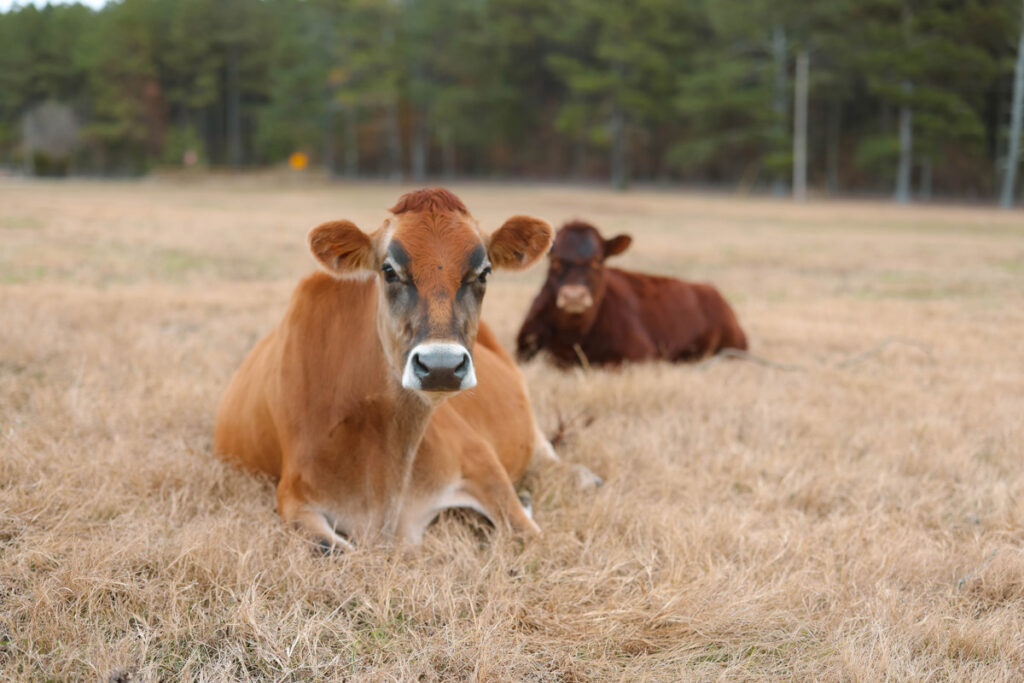
Breeding
To keep a dairy animal in milk, it will need to be bred back yearly. The typical routine for this is as follows:
- Once a cow calves or a goat kids, milk that animal.
- Re-breed the animal every year and continue milking for about nine or ten months.
- Give the animal two or three months to prepare for delivery, then start the process over again.
This is why we like to have multiple dairy animals. If you don't, you'll need to understand that you'll be going about two to three months every year without milk.
You'll also need to think about how you will breed your animal. We have done both AI and direct breeding with a bull or buck. Direct breeding is more reliable as the animal does all the work. AI is expensive and doesn't come with a 100% success rate. This is the main reason we purchased our own bull.
Some other options are to find a friend with a bull or buck and borrow it each year.
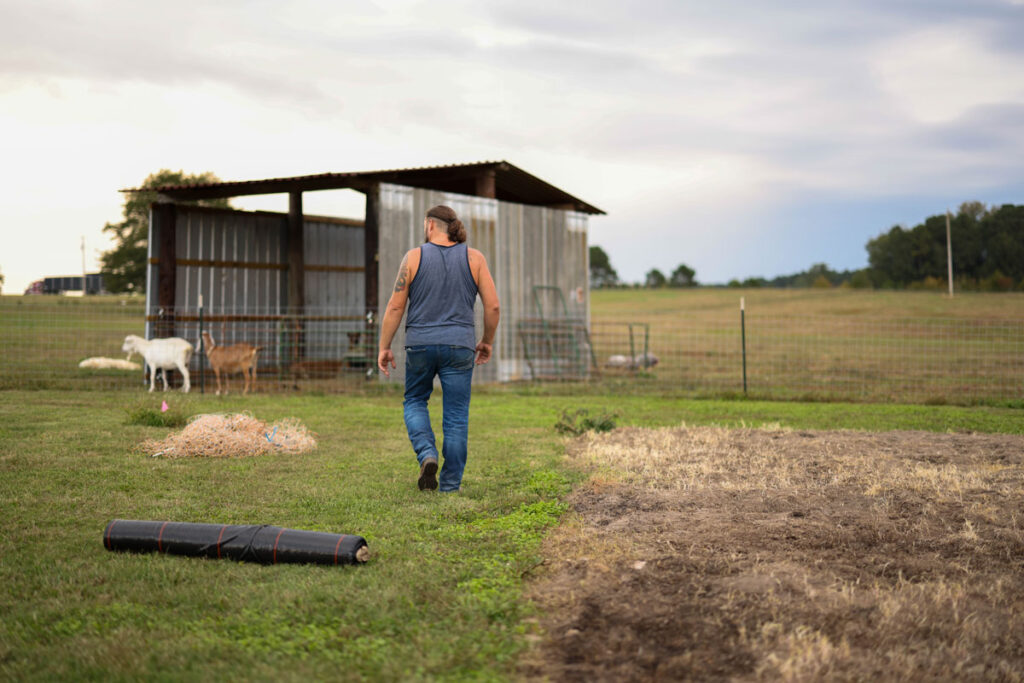
Shelter
Know ahead of time how you'll provide shelter for your dairy animal. For goats, they can be wet or they can be cold, but they can't be wet and cold. So they need a shelter to get out of the rain or snow.
Cows are a different story. Even if they have shelter, a cow is likely to stand out in the sleet and snow!
Also, keep in mind that these animals are herd animals. They can survive alone, but they will thrive with a friend. For goats, you can purchase a wether (a castrated male goat). For cows, they're pretty friendly and can become social with other species.
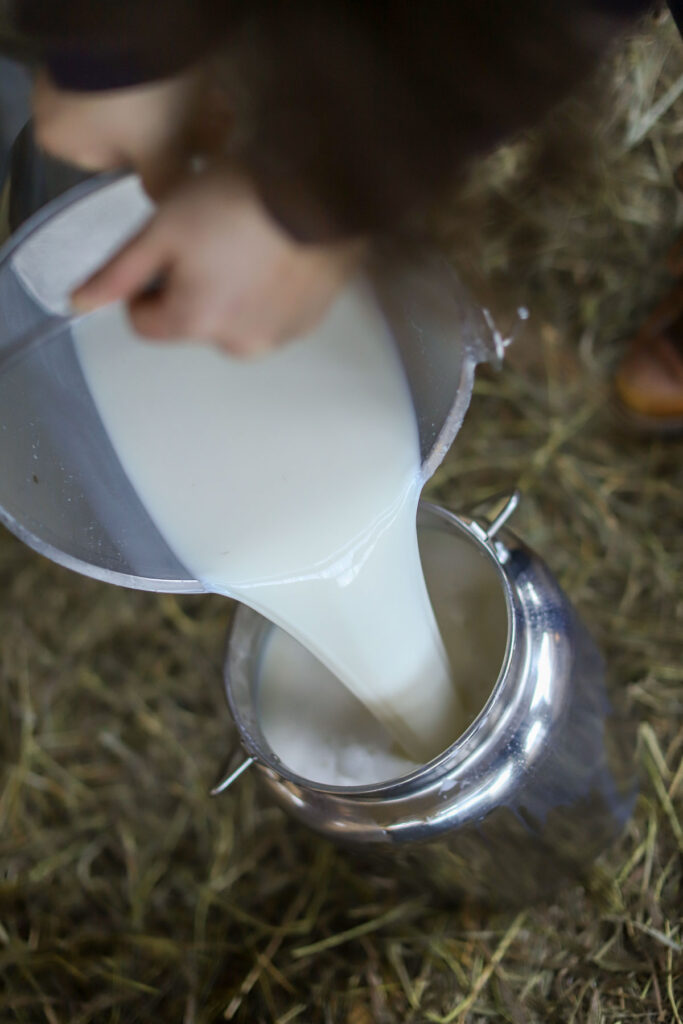
How to Offset the Cost of a Dairy Animal
If you're raising a cow for milk, chances are you're getting between 3-5 gallons of milk per day. For the average family, this may seem like a lot of milk. But when you consider all the things that milk can be turned into, it starts to seem like a proper amount.
Homemade Dairy Products
Fresh raw milk can be made into:
- Homemade yogurt
- Butter (learn to make homemade butter)
- Soft cheeses (like homemade mozzarella)
- Hard cheeses
- Ice cream
- Pudding
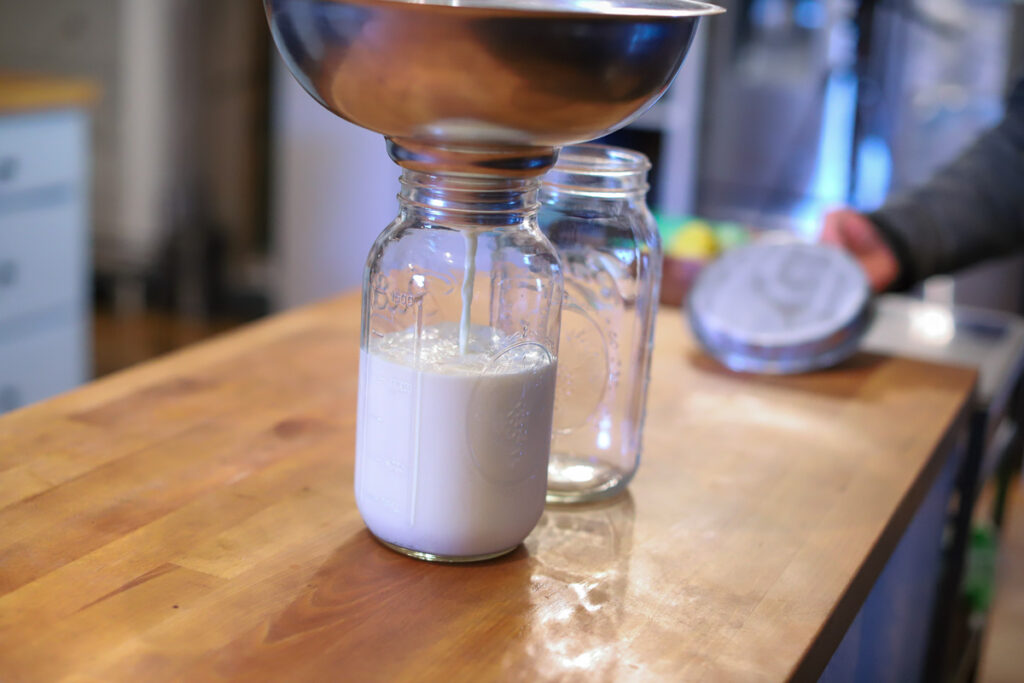
Sell Raw Milk (or Dairy Products)
We quickly realized that if we purchased a couple more cows, not only would we always have fresh milk available year-round, but we could also start selling the excess milk to neighbors and friends to help offset the cost of raising the cows.
We can easily sell enough milk daily to cover the cost of the grain the cows are eating. So our own milk is now paid for by our labor.
My final encouragement would be to not be overwhelmed. This is a lot of information to take in at once. But they're all things I think are important when considering the home dairy and getting started with dairy animals.
